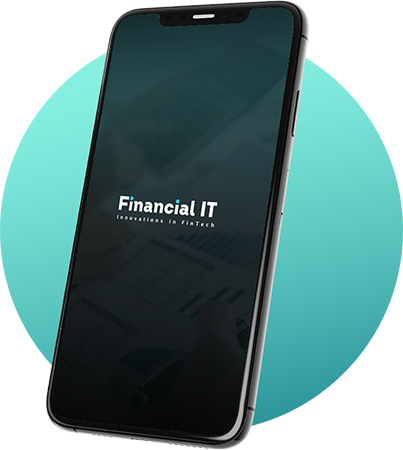Why ‘Prompt’ Will Always Beat ‘Instant’ for B2B Payments

- Pat Bermingham, CEO at Adflex
- 06.06.2025 10:00 am #B2BPayments #PromptPayments
Experts predict that instant payments could be revolutionary. Between 2023 and 2030, the value of transactions processed using instant payment technology is forecast to grow by 289%. It’s not just crystal ball gazing: in 2018, instant payments accounted for 0.08% of all EU credit transfers; today they represent almost 20% of transfers and show no signs of slowing down.
Backed by regulatory momentum and a strong offering of speed, convenience and efficiency, many view instant payments as the future. But this is a very B2C centric perspective. B2C payments differ drastically from their B2B counterpart and in the world of B2B payments, speed isn’t everything.
Apples and pears: differentiating between B2C and B2B
The complexity and scale of B2B payments is a world apart from B2C. Typically, B2B payments involve higher volumes and higher values, often worth hundreds of thousands, or even millions, per transaction. This makes the stakes much higher: Fortune Business Insights projects that the B2B payment market will grow from US $97.88 trillion this year to $213.28 trillion by 2032.
There is also a strategic element to timing a B2B payment. Payment terms can differ by industry or even by business. Companies will often time payments to manage liquidity, cash flow, and working capital. This is opposed to a B2C transaction, which usually settles in days – at most – for digital transactions, and instantly for cash.
For these reasons and more, B2B payments are considered far more complex than B2C payments, with different priorities to deliver.
Why ‘instant’ isn’t always ideal
The benefits of instant payments certainly make for an attractive offer, but the existing technology is far from perfect. In 2024, the European Banking Authority (EBA) published a paper analysing payment data from 2022, finding that "instant payments feature notably higher fraud rates than traditional credit transfers" - ten times higher on average in terms of fraud value.
Instant payment transactions are, by nature, immediate. This sounds like it should be the goal for buyers and sellers. But the fast speed and ease of transaction can create a greater sense of complacency and fraudsters can prey on this for APP scams. Typically, these payments are also irrevocable, meaning once sent, they are near impossible to recover. There is extremely limited time to check the authenticity and accuracy of payments, and once completed, the money is as good as gone. These factors contribute to making instant payments an extremely attractive target for fraudsters.
Outside of security concerns, instant payments are also more susceptible to human error. One mistaken data entry could instantly flush your business of vital cashflow, or send money to the wrong supplier, putting the entire company in jeopardy.
If your business received an invoice for £100,000, would you want your Accounts Payable team to automatically and instantly transfer the funds the moment it hit your inbox? Nine times out of ten, the answer is no. Businesses want – and need – some friction to perform the appropriate risk management and procurement processes.
Why ‘Prompt’ beats ‘Instant’
Regardless of the current limitations of instant payment technology, legacy and manual B2B payment technologies are contributing to the current late payment crisis. Late payments in the UK, for example, are causing the closure of 50,000 businesses each year: increasing the speed of settlement is therefore a clear economic priority. However, it is critical that speed is balanced with certainty and control, and this is the difference between an ‘instant’ and ‘prompt’ payment.
A prompt payment is still delivered in a timely fashion, ahead of the agreed payment terms. Yet unlike instant payments, a prompt payment enables time to agree payment terms and allows time for vital risk management; reliability is more important to suppliers than an instant remittance. Prompt payments is an essential part of ensuring secure and accurate payment practises, boosting buyer-supplier relationships rather than putting undue pressure on businesses to pay with no buffer for internal review or the proper security checks.
Consumer paytech fails to meet B2B needs
Faster payments risk faster fraud. But that doesn’t mean there’s no benefit in more timely payments. They are the lifeblood of business and the tragic stories of businesses going under due to late payments are too many to mention. One B2B payment technology, virtual cards – which is not actually new – is currently having its breakout moment and forecasts predict their value will grow by 235% over the next four years.
A virtual card is a digitised version of a commercial (credit) card, generated for a specific purpose. This could be for a one-time transaction, an allocation to a specific employee or department within a company, or to assign a limited budget or time period for its use. The ability to front-load the cards offers unrivalled control over spend.
The commercial foundation of the virtual card also allows businesses to make payments using an extended line of credit. This enables buyers to pay suppliers on time, while maintaining their own working capital. All of these benefits are more valuable to buyers and suppliers than an instant transfer.
The virtual nature of the card offers significant automation opportunities too. The cards can be generated and issued with specific limits, expiration dates, and vendor restrictions. Each virtual card transaction also generates real-time, itemised records, which can be automatically fed into accounting systems. These automation opportunities have the potential to save valuable time and resource for Accounts Payable and Accounts Receivable teams.
Virtual cards also encrypt payment data when transacting, ensuring sensitive information is secure, drastically reducing the attack vector that fraudsters can target. In addition, by implementing spending limits and vendor restrictions on cards, it becomes extremely hard for fraudsters to conduct successful scams.
In a B2B world where the ramifications for getting payments wrong can be catastrophic, ensuring the accuracy and authenticity of payments is paramount. Instant payments are still hamstrung by security concerns and are too prone to human error. The future of B2B payments lies in prompt payments, not instant.
Virtual cards currently offer the right balance of speed, security and control. Soon they will be joined by Commercial Variable Recurring Payments (cVRPs) that will bring further control and automation to recurring payments, cutting manual processes to save time while enabling continued oversight of cashflow. In B2B, ‘slower’ payments, supported with carefully orchestrate automated processes, means safer payments.



















